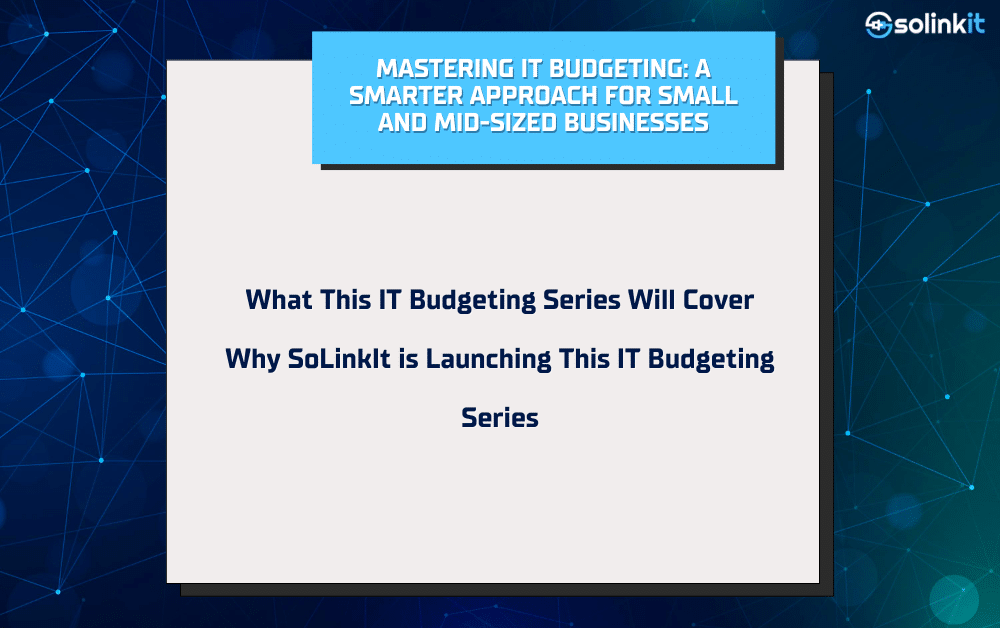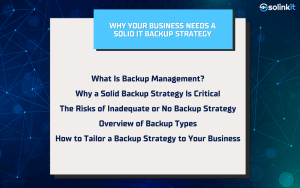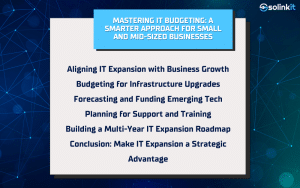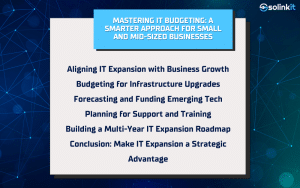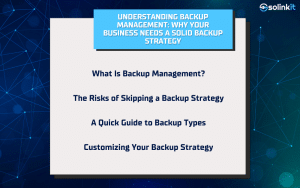Running a small or mid-sized business means every investment needs to drive results. IT budgeting ensures your technology supports—not hinders—your operations. It’s the strategic framework that allows businesses to allocate technology spending in ways that drive efficiency, ensure cybersecurity, and support overall goals. A clear IT budgeting plan also creates transparency across departments, setting expectations and priorities for both short-term operations and long-term initiatives. Many SMBs approach tech spending reactively. When unexpected issues arise—whether a data breach, expired software licenses, or system failures—the lack of an IT budget forces rushed decisions and inflated costs. Emergency fixes are often more expensive than planned upgrades or preventative measures. Without IT budgeting, businesses may also overlook critical updates or security patches, exposing themselves to compliance violations or operational downtime.
What This IT Budgeting Series Will Cover
Part 1: Establishing an IT Budget — Key Factors to Consider
Setting Realistic IT Budget Expectations
IT budgeting isn’t one-size-fits-all. We’ll discuss how business size, industry, and growth plans affect how much you should allocate. For example, a tech-forward company may need to invest more aggressively, while a service-based business might focus on maintenance and cybersecurity. You’ll learn how to create a balanced plan that doesn’t sacrifice performance for cost.
Breaking Down Your IT Expenses
A successful IT budgeting strategy includes both predictable and dynamic expenses. Fixed costs include infrastructure (like routers, servers, or endpoint devices) and recurring software licenses. Variable costs might include cloud storage usage, scaling platforms, or tech support. We’ll help you map out these categories to reduce guesswork and avoid budget bloat.
Factoring in Security and Compliance Costs
Cyber threats are constantly evolving, and compliance requirements are becoming more demanding. IT budgeting must account for antivirus software, firewalls, staff training, secure backups, MFA, and any regulatory audit preparation. We’ll also highlight the cost of inaction—such as fines, lawsuits, or data recovery expenses.
In-House vs. Outsourced IT Costs
Do you have the internal capacity to manage your IT systems—or would a managed service provider (MSP) be more cost-effective? We’ll weigh the budget implications of both, including hidden costs like downtime, onboarding new tech staff, or lack of expertise when facing security threats.
Part 2: Planning for IT Expansion and Future Needs
Forecasting Growth in Your IT Budgeting Plan
As your business evolves, so do your technology needs. Planning for new hires, system integrations, or expanded office space requires forecasting bandwidth, devices, licensing, and support. We’ll show you how to scale your IT budgeting in sync with your business roadmap.
Budgeting for Innovation and Emerging Tech
Don’t just plan for the bare minimum—budget for opportunity. Whether it’s adopting new CRM tools, automating tasks with AI, or enhancing team collaboration with cloud platforms, modern IT budgeting requires foresight and flexibility. This section will help you future-proof your spending.
Replacing Legacy Systems Without Breaking the Bank
Old hardware or outdated software might still function—but it can drag down productivity, increase risk, and cost more in maintenance. Learn how to prioritize replacements and spread the cost over multiple budget cycles without financial strain.
Creating a Long-Term IT Budget Roadmap
Your IT budgeting shouldn’t be reactive. We’ll guide you through building a 1–2 year technology roadmap that aligns with business milestones, seasonal demands, and evolving tech trends. This forward-looking approach helps eliminate surprises and empowers smarter investments.
Why SoLinkIt is Launching This IT Budgeting Series
Guidance for Growing Businesses Without a CIO
Most SMBs don’t have a full-time IT strategist. That’s why SoLinkIt created this series—to bridge the gap. We’re equipping you with the tools and insights needed to make tech budgeting less intimidating and more actionable.
Real-World Experience Meets Practical Advice
Our team works closely with businesses across a variety of industries—from professional services to retail and manufacturing. These IT budgeting strategies are based on real case studies and success stories, not just theory.
No Jargon—Just Actionable Tips
We’re focused on clarity. You won’t find buzzwords or corporate fluff here—just practical tips, real examples, and step-by-step guidance you can use immediately. IT budgeting should feel like a roadmap, not a maze.
What’s Next in the IT Budgeting Series?
Wrapping Up and Looking Ahead
In our next post, we’ll dive into the core of building your budget: identifying your costs, prioritizing spending, and aligning IT investment with your goals. It’s the foundation of every future IT decision you’ll make. If your IT costs feel unpredictable or you’re unsure where to start—SoLinkIt can help. Reach out today for a consultation, or stay tuned for Part 1 to begin your IT budgeting journey with confidence. Visit SoLinkIt.com to learn more or schedule a consultation.
